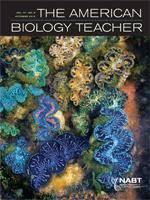Congenital heart disease in newborns exhibits a spectrum of defects, one of which is the occlusion of the vascular conduits of the arteries. For students first learning about cardiovascular lesions, the tortuous path of blood vessels can be visually overwhelming to the untrained eye, and useful models are needed to help deconstruct the morphological complexity of heart chambers and vessel location during heart development and disease. Here, I present two hands-on activities to explore how pulmonary artery stenosis may have dire consequences, such as cardiac muscle cell hypertrophy. These activities will not only help students explore genetic aberrations associated with congenital heart diseases, but will also encourage them to think about how to develop molecular and cellular strategies that fix primary obstruction in other branched organs such as the gut, kidney, and pancreas.
How to translate text using browser tools
1 October 2015
Traffic Jam Response: Hands-on Activities for Exploring Artery Roadblocks
Robert M. Kao
ACCESS THE FULL ARTICLE
It is not available for individual sale.
This article is only available to subscribers.
It is not available for individual sale.
It is not available for individual sale.

The American Biology Teacher
Vol. 77 • No. 8
October 2015
Vol. 77 • No. 8
October 2015
heart
hypertrophy
Organogenesis
stenosis
Tetralogy of Fallot




